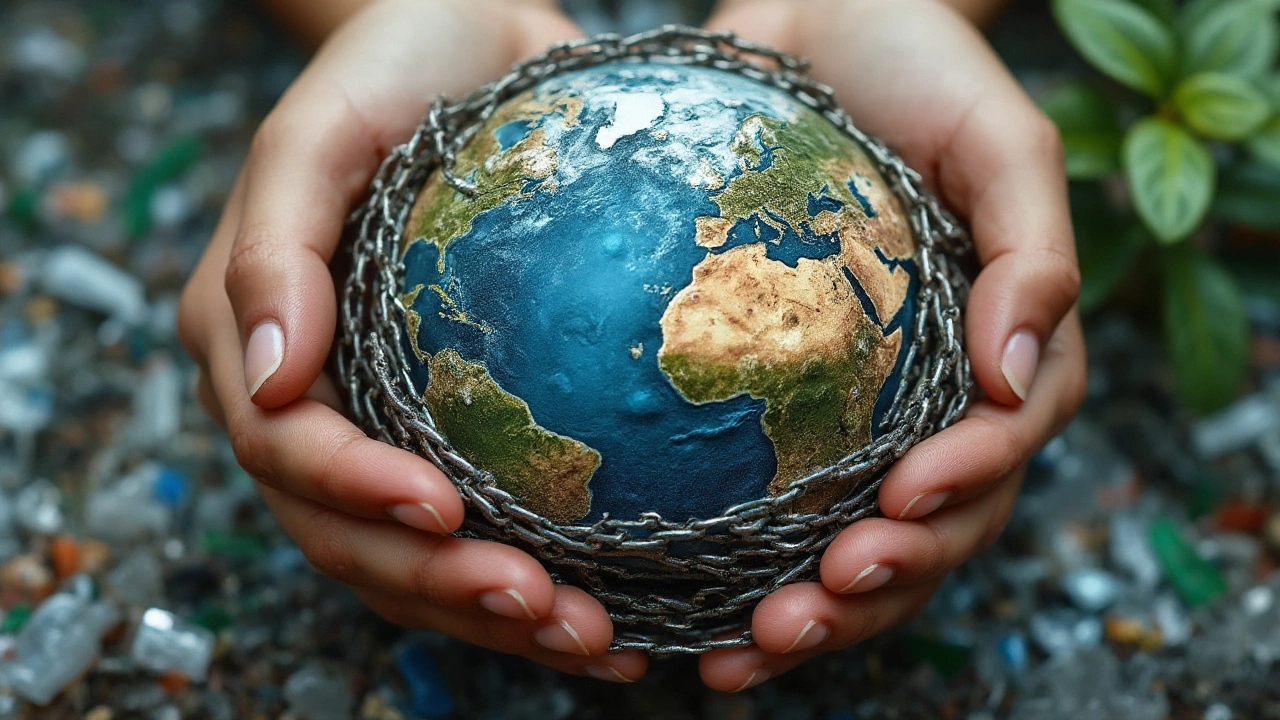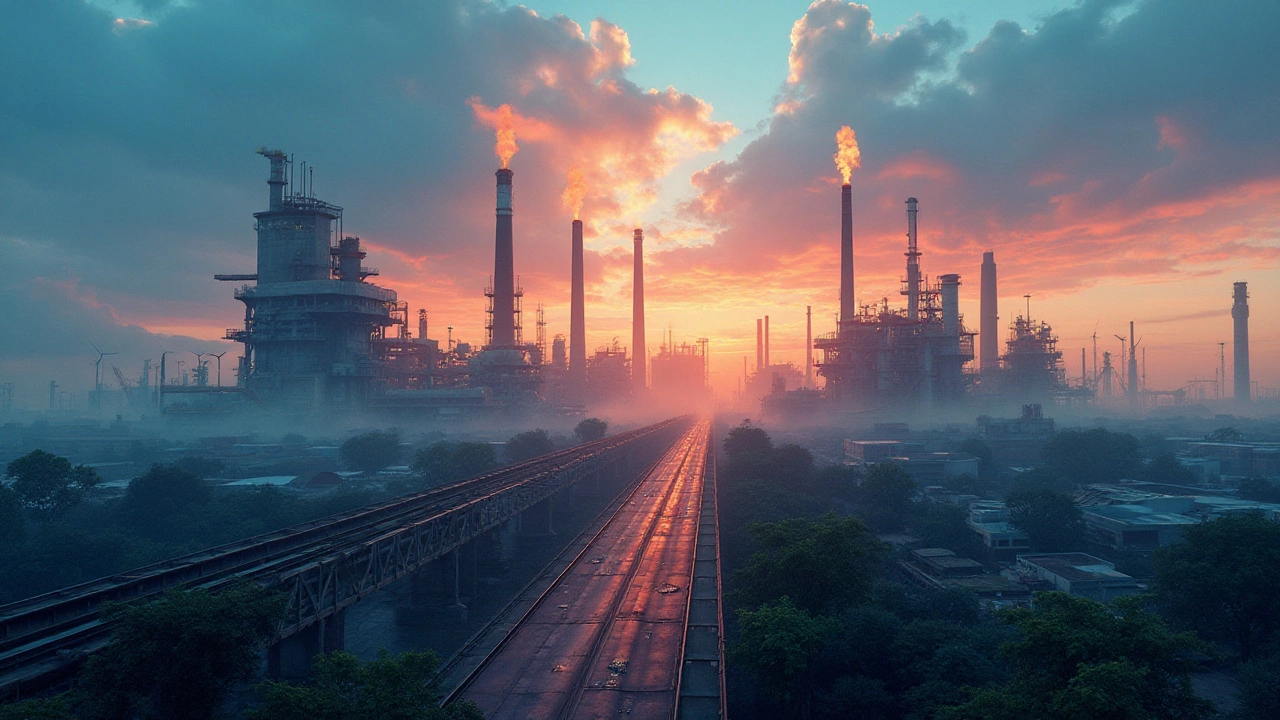The world of plastic production is dominated by a few key players, each contributing significantly to the global market. These companies are responsible for creating a large percentage of the plastic products that infiltrate our daily lives, from packaging and containers to automotive parts and technology components.
Understanding who these companies are and the scale at which they operate can reveal much about the industry's overall influence on the environment and the economy. While the convenience and versatility of plastic are undeniable, there is an increasing need to balance its production with ecological considerations. Some companies are taking steps toward this balance, adopting innovative methods to reduce waste and promote sustainability.
Exploring these dynamics provides insight into what the future might hold for plastic manufacturing, as the industry grapples with pressing environmental concerns and evolving consumer attitudes toward sustainability.
- The Giants of Plastic Production
- Environmental Impact and Responsibility
- Innovations and Sustainable Practices
- Future of Plastic Manufacturing
The Giants of Plastic Production
The vast realm of plastic manufacturing is not shared equally among companies. Instead, a few titans stand tall, dominating production and setting industry standards. At the forefront of this industry is ExxonMobil, a major player not just in plastic manufacturing but in energy as well. Known for their expansive operations, ExxonMobil's production of polyethylene and polypropylene feeds a never-ending stream of demand that shapes industries globally.
BASF, a German multinational, is another behemoth in this field. As one of the world's largest chemical producers, it has a robust line of plastic innovations tailored for numerous sectors. BASF not only excels in volume but also leads in advancing polymer technology. Their commitment to sustainable practices includes the development of biodegradable plastics and efforts towards a circular economy. This direction marks a significant shift as industries reckon with environmental obligations.
"Our aim is to be more resourceful with the planet's resources and close the loop for plastics," said Martin Brudermüller, Chairman of the Board of Executive Directors of BASF SE.
Dow Chemical Company, an American powerhouse, holds its position among the top players through its strategic integration and innovation-driven approach. Dow's extensive product lineup spans consumer goods, packaging solutions, and construction materials. They focus significantly on research, driving cost-effective and cutting-edge plastic solutions that meet the demands of complex industries.
SABIC, based in Saudi Arabia, carries its weight through diversified interests in chemicals, metals, and plastics. Its strong financial backing and access to key resources allow it to be a key driver of change in the global plastic production landscape. Notably, SABIC's innovative approaches to material science include a foray into enhancing recyclability and energy efficiency.
Lastly, LG Chem, the South Korean conglomerate, carries a significant influence on the Asian markets and beyond. LG Chem leverages its technological expertise to create advanced polymer products, particularly in electronics and automotive sectors, ensuring it remains at the cutting edge of the industry's advancements. These companies not only highlight the massive scale of plastic manufacturing but also demonstrate the pivotal role of innovation and responsibility in shaping the future of the plastic industry.
Environmental Impact and Responsibility
The production of plastic, particularly by large-scale plastic manufacturers, carries significant environmental consequences that have become increasingly difficult to ignore. As the world becomes more aware of the need for sustainability, these manufacturers are under pressure to address their environmental footprints. The process of creating plastic involves substantial amounts of energy consumption and the emission of greenhouse gases, which contribute to climate change. Additionally, the longevity and durability of plastic products mean they persist in the environment, breaking down into microplastics that infiltrate ecosystems and potentially infiltrate food chains. This has led to a growing public awareness and concern, prompting debates about both the utility and the environmental risks associated with plastic.
One cannot discuss the environmental impact of plastic without mentioning the issue of waste. Landfills around the world are overflowing with discarded plastic, and oceans are choked with millions of tons of waste that threaten marine life. In fact, it's estimated that by 2050, there will be more plastic in the ocean than fish, a scenario that underscores the urgent need for change. This has motivated some countries to enforce stricter regulations regarding plastic production and disposal, while companies are pushed to innovate around recycling and biodegradable options. The responsibility here is not solely on the manufacturers but also on consumers and policymakers to drive the push for a more sustainable future.
In response to these challenges, many leading plastic producers are actively seeking ways to mitigate their environmental impact. Some companies are investing in research and development aimed at creating more eco-friendly alternatives, such as bioplastics, which decompose more readily than conventional plastics. There is also a focus on improving recycling processes to increase the efficacy of recovering and reusing plastic materials. At the same time, these companies are incorporating sustainable practices into their operations, such as energy-efficient manufacturing processes and carbon offset programs. These efforts are crucial in reshaping the perception and impact of the plastic industry, aligning economic success with ecological responsibility.
Jane Goodwin, a sustainability expert, once said, "The key is not only in reducing our reliance on plastic but in transforming the industry's approach towards more sustainable production." Her words resonate strongly within the industry, serving as a call to action that many companies are heeding. This transformation involves a combined effort of innovation, policy change, and consumer education, a daunting task but undoubtedly necessary.
As the world grapples with these environmental challenges, it is clear that the future of plastic manufacturing lies in a balance. This balance involves continuing to meet the economic demands of plastic's versatility while drastically reducing its ecological ramifications. Companies that can successfully innovate will likely set the standards for the industry, leading the charge in both production and sustainability. The journey towards sustainable plastic production is complex and multifaceted, but it is a crucial path forward for the health of our planet and for future generations.
| Company | Initiative | Impact |
|---|---|---|
| Biomerics | Bio-based plastics | Reduces fossil fuel reliance |
| Greenbutts | Sustainable alternatives | Decreases environmental waste |

Innovations and Sustainable Practices
The plastic manufacturing industry is undergoing a significant transformation, with innovations focused on sustainability at the forefront. Companies that produce large amounts of plastic are recognizing the critical role they play in environmental stewardship. A growing number of these organizations are adopting technologies that minimize waste and reduce the carbon footprint of their operations. One notable trend is the development of bioplastics, which are derived from renewable plant sources and are often biodegradable. This shift not only aims to lessen dependency on fossil fuels but also contributes to a reduction in pollution.
Leading companies in the industry are investing heavily in research and development to create new materials that mimic the properties of traditional plastics while being more environmentally friendly. For instance, innovations in chemical recycling enable plastics to be broken down into their basic components and reconstructed, effectively allowing for a closed-loop system that can significantly cut down the volume of waste ending up in landfills. The advent of such circular economy models is reshaping how we view consumption and waste.
Another promising avenue that these companies are exploring is lightweighting of products. By engineering materials that maintain structural integrity with less mass, they not only reduce the volume of raw materials needed but also the energy required for manufacturing and transportation. This process can lead to significant cost savings and environmental benefits. As a result, more companies are implementing these strategies as part of their commitment to sustainability.
Some industry leaders are also collaborating with environmental organizations to advance plastics recycling infrastructure globally. These partnerships often focus on innovative collection and sorting techniques that enhance the efficiency of recycling systems. Additionally, some companies have pledged ambitious goals for increased use of recycled content in their products. This holistic approach addresses the issue from multiple angles, ensuring that sustainability is embedded not just in design but also in the lifecycle of the product.
"Our industry is at a pivotal crossroads where technology and sustainability must intersect," said Jane Smith, CEO of a major plastic manufacturing firm. "We are committed to driving advancements that not only serve our business but also secure the future of our planet."
There's also a rise in public-private partnerships focusing on educating consumers about proper recycling practices. These educational initiatives are crucial in boosting recycling rates. When consumers are better informed about how to dispose of plastics correctly, it reduces contamination in recycling bins and improves the quality of recycled materials. The collaboration between manufacturers and the public is integral in addressing the plastic waste issue effectively.
Future of Plastic Manufacturing
The future of plastic manufacturing is poised at a crossroads, driven by technological advances and mounting environmental concerns. For years, the industry has been a heavyweight in global production, but today, it stands before a challenge to innovate or risk stagnation. Increasingly, consumers and governments are demanding sustainable alternatives, pressing manufacturers to adapt. The transition to biodegradable plastics, for example, reflects a growing commitment to reducing environmental footprints. These are derived from renewable resources instead of traditional petrochemicals, making them a more eco-friendly choice.
One aspect of this evolution is the development of circular economies within plastic production. This involves creating systems where waste is minimized, and resources are reused. As initiatives pick up pace across various sectors, companies are investing in technologies that can efficiently recycle and reprocess used plastics, turning waste into a valuable resource. The use of chemical recycling technologies, which break down plastics into their basic monomers, allows for higher-quality recycling compared to mechanical recycling. Such innovations are crucial as the world moves toward sustainability. A report by McKinsey & Company highlights that "advancements in chemical recycling could potentially address 60% of the plastic waste issue by 2030."
The integration of Artificial Intelligence (AI) in production processes is another exciting prospect. AI can enhance process efficiencies and optimize the creation of new plastic materials with desired properties. Machine learning algorithms can predict potential product failures, leading to improved quality and reducing waste. Moreover, smart factories, employing Internet of Things (IoT) devices, allow real-time monitoring and control of production lines, cutting operational costs and improving carbon footprints.
Amid these technological strides, legislative frameworks across the globe are shaping the future. New laws and regulations are being formulated to limit single-use plastics and impose stricter waste management practices. This is especially evident in the European Union, which has set ambitious targets for recycling and aims to make all plastic packaging recyclable by 2030. Such policies are drivers of innovation as companies must comply or face penalties. Additionally, public-private partnerships are flourishing, where governments incentivize companies to invest in sustainable practices.
A change in consumer behavior is both a driver and reflection of these shifting dynamics. With greater awareness about environmental issues, there's a rising demand for transparency in production processes. Consumers now prefer brands that prioritize eco-friendliness, encouraging companies to adopt green practices not just as a compliance measure but as a market strategy. Industry giants are already branding their products with labels like 'made from recycled materials' or 'biodegradable', tapping into the expanding market of environmentally conscious customers. This trend is likely to gain traction as new generations, more attuned to sustainability issues, assert their influence in the market.

